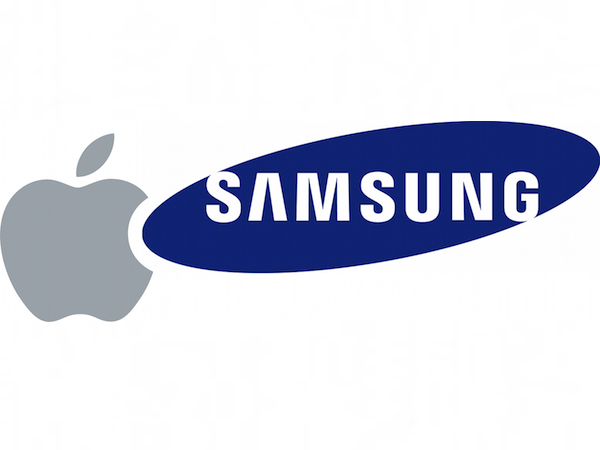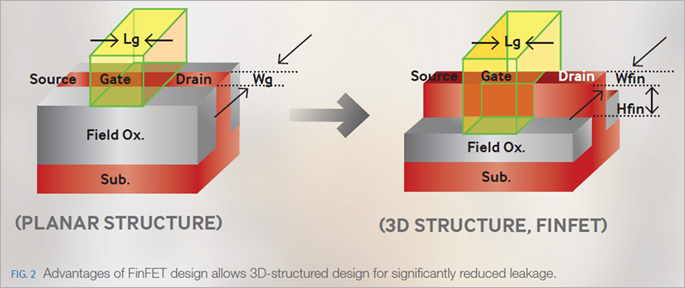Report: Samsung To Build Apple's A9 Chips
Last year, it was rumored that Samsung would go back to making Apple's next A9 chip on its 14nm FinFET process. This was after TSMC had already won all the A8 and A8X orders and Apple stopped making its chips at Samsung. Later it was rumored that Samsung lost most of the A9 orders, and that TSMC would go back to making at least 70 percent of Apple's new chips.
A new report from Bloomberg said that Apple will use Samsung's foundry to build all of its A9 chips, even after TSMC already budgeted $12 billion to invest in its new 16nm FinFET process technology. The A9 chips will be built at Samsung's Giheung plant in South Korea.
Apple spent $25.8 billion buying its chips last year, which represents 7.6 percent of the industry's total chip purchases, according to Gartner, a market research company. Because Apple ended its chip manufacturing contract with Samsung last year, Samsung saw a loss of almost $1 billion. The new orders from Apple could give Samsung a $1 billion gain this year.
Any additional orders will be handled by its partner Global Foundries, which has licensed the same 14nm process technology from Samsung. The partnership will give Samsung access to Global Foundries' factories in Texas, New York state and South Korea.
“If Globalfoundries quickly adopts Samsung's most advanced technology and increases yield, it could also win orders from Qualcomm."
Qualcomm has also been rumored to use Samsung's 14nm FinFET process for its Snapdragon 820 flagship chip, as well as for other lower-end chips going forward. Samsung recently tried to distance itself from Qualcomm by refusing to use the Snapdragon 810 chips in the Galaxy S6. However, it's likely that Samsung will continue to build Qualcomm's chips in its factories, as that will increase the company's revenues.
It's less costly to build the same chip with one process technology, which is why companies such as Apple and Qualcomm would prefer to build a single generation of chips at the same foundry. Business politics and more aggressive negotiations can sometimes interfere with that, but the way for a company such as Apple to limit those issues is to build one generation of chips at one foundry, and every other generation at another.
Get Tom's Hardware's best news and in-depth reviews, straight to your inbox.
This way, both foundries would continue to compete for the same customer, and at the same time Apple wouldn't have to abruptly end its business with either one of them. Apple tends to sell its previous-generation iPhones and iPads for a couple more years after a new generation comes out, which means the foundry building its chips would still continue to receive income from Apple (albeit significantly less for those chip generations).
Apple also tends to release its new iPhones and iPads in the fall, and that's when we should first see its new 14nm FinFET A9 chips. The A8 chip used the second generation Cyclone core, so the A9 may use a redesigned core based on the same ARMv8 instruction set. That means the A9 could benefit not just from the new, more energy-efficient FinFET process, but also from improvements in the CPU's own microarchitecture.
Follow us @tomshardware, on Facebook and on Google+.
Lucian Armasu is a Contributing Writer for Tom's Hardware US. He covers software news and the issues surrounding privacy and security.
-
wjdzm I heard Samsung announced that they completed their 10nm FinFET research and will be put to production with in a couple years.Reply -
ta152h This has been pretty well known for months, especially when the CEO of TSMC said Samsung would outship them this year, but they would outship Samsung in FinFets next year.Reply
Also, there had to be a reason for GloFo installing FinFet equipment this year, when AMD will not be using it until 2016. So, I'd expect them to be shipping some of those A9's, as Samsung will not have capacity to do so, with their own devices being made there too.
The reason is simple, Samsung had their version out sooner. TSMC is still not shipping 16FF+, and Apple didn't have time to wait.
This has nothing to do with one generation on one company, the other at another. It's just that Samsung's 14nm LPE is out, TSMC's was a few quarters later.
The A9X will be built at TSMC, however, which will go into the iPad. -
ericburnby Replywell, at least there will be one good thing in that phone.
Correct. Designed and engineered by Apple, and run through Samsung photocopy fabs. Maybe one of these years Samsung will learn how to design a processor, instead of just using others designs. -
soldier44 I stopped reading at 1920 x 1080....Where are the 30 inch + 4K curved IPS monitors Sammy?Reply -
Wisecracker It will be interesting to see what GlobalFoundries has cooking up in Luther Forest.Reply
-
laststop311 ReplyThis has been pretty well known for months, especially when the CEO of TSMC said Samsung would outship them this year, but they would outship Samsung in FinFets next year.
tsmc will ship way more 16nm ff+ eventually because it is actually suitable for high powered use like in large discrete gpu's samsung process is only good for low powered chips as they rly have no business interests in the high powered semi conductor industry.
Also, there had to be a reason for GloFo installing FinFet equipment this year, when AMD will not be using it until 2016. So, I'd expect them to be shipping some of those A9's, as Samsung will not have capacity to do so, with their own devices being made there too.
The reason is simple, Samsung had their version out sooner. TSMC is still not shipping 16FF+, and Apple didn't have time to wait.
This has nothing to do with one generation on one company, the other at another. It's just that Samsung's 14nm LPE is out, TSMC's was a few quarters later.
The A9X will be built at TSMC, however, which will go into the iPad. -
dr6aj Replywell, at least there will be one good thing in that phone.
Correct. Designed and engineered by Apple, and run through Samsung photocopy fabs. Maybe one of these years Samsung will learn how to design a processor, instead of just using others designs.well, at least there will be one good thing in that phone.
Correct. Designed and engineered by Apple, and run through Samsung photocopy fabs. Maybe one of these years Samsung will learn how to design a processor, instead of just using others designs.
Obvious you are not familiar with IC manufacturing. No way does APPLE produce manufacturing masks or any 3d designs, they be lucky to master therm issues.
After APPLE broughtthe small ARM design corp, the firm's real designers left, so they were buying more PR claims and some ARM/power licensing deals vs manufacturing patients. The 14 is Samsung tech and their patents, not APPLE. Samsung spends the time fixing APPLEs cpu designs into functioning reality. Usually that is the most costly part of any production. Running a few VHDL programs does not produce a useable design. -
ericburnby ReplyObvious you are not familiar with IC manufacturing. No way does APPLE produce manufacturing masks or any 3d designs, they be lucky to master therm issues.
After APPLE broughtthe small ARM design corp, the firm's real designers left, so they were buying more PR claims and some ARM/power licensing deals vs manufacturing patients. The 14 is Samsung tech and their patents, not APPLE. Samsung spends the time fixing APPLEs cpu designs into functioning reality. Usually that is the most costly part of any production. Running a few VHDL programs does not produce a useable design.
Clearly I know more than you after reading that pile of crap.
Apple is responsible for the MAJORITY of their processor design. All Samsung does is build the processor according to Apple's specs. Apple is just like AMD/ATI, Nvidia or numerous other fabless design companies.
Or are you going to now tell us that Nvidia GPU's (for example) have nothing to do with Nvidia technology/design and the real work is done by whatever fab makes it for them?

